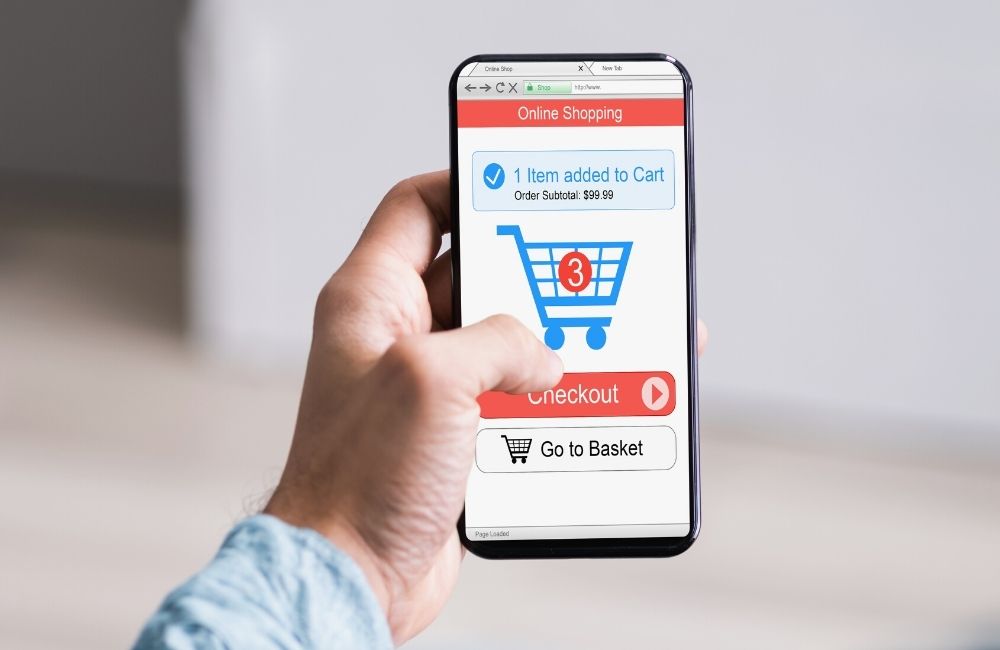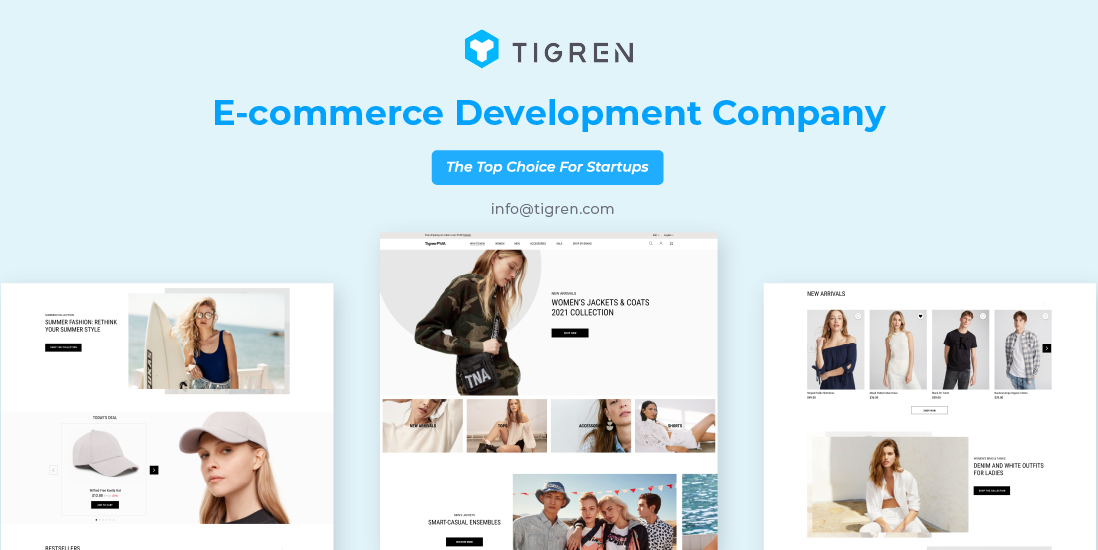Welcome to the digital age, where ecommerce holds the key to boundless opportunities for entrepreneurs and businesses. However, success in the world of ecommerce isn’t as simple as launching a website and hoping for the best.
Picture an online store where every click, every image, and every word on the screen is meticulously designed to capture attention, engage visitors, and turn them into devoted customers. Envision a shopping experience so smooth and intuitive that customers can’t resist coming back for more. This is the promise of effective ecommerce design—a promise we’ll explore deeply in this blog post.
Whether you’re a seasoned online retailer or just beginning your ecommerce adventure, there’s valuable insight here for everyone. So, here are the things you need to consider when building an e-commerce website.
Contents
1. Product Showcase And Descriptions
The cornerstone of any successful ecommerce website lies in its ability to effectively showcase and describe the products on offer. After all, the primary objective of an online business is to sell its merchandise. To achieve this, there are essential elements to consider when presenting your products to potential customers.
Your first step should be to captivate visitors’ attention with striking visuals. High-quality product images are your storefront’s window display in the digital world. They allow customers to see the product in detail and provide a glimpse of how it would look in their lives.
Opt for high-resolution photos that offer clarity and accuracy in representing your products. These images serve as a virtual showroom and can make or break the decision to explore further.
Beyond enticing visuals, your product listings must provide comprehensive and accurate information. In the absence of a physical in-store experience, online shoppers rely heavily on the details you provide to make informed choices.
By offering detailed and accurate product descriptions alongside high-quality images, you empower your customers to make informed purchasing decisions. This not only enhances their shopping experience but also builds trust in your brand, ultimately increasing the likelihood of conversions and repeat business.
2. Design Matching Your Products

When building your ecommerce website, it’s essential to ensure that its design harmoniously matches the essence of what you’re selling. Remember that the design serves as a powerful tool for conveying your brand identity and showcasing your products. Your website’s appearance should offer a clear and immediate impression of your products to any visitor.
To achieve this, every aspect of your website, from graphics to color schemes and fonts, should be thoughtfully chosen to align with your product line. For example, if your ecommerce store focuses on women’s clothing with an elegant style, your web design should mirror this elegance, projecting sophistication and, perhaps, a touch of classic charm.
3. Shopping Cart Design
A well-designed shopping cart is the linchpin of any successful ecommerce website. It’s the virtual shopping basket where users interact with their chosen products and make purchase decisions. The goal here is to make this experience as effortless and enjoyable as possible.
At its core, a shopping cart should simplify the process of adding and removing products and adjusting orders. It should seamlessly integrate with the user’s shopping journey, offering an intuitive interface that requires minimal effort to navigate.
Here are essential elements to consider:
- Product Photos: Include images of the items in the cart, ensuring users can visually confirm their selections.
- Order Summary: Provide a concise breakdown of the items in the cart, including quantities, prices, and any applicable discounts or promotions.
- “Continue Shopping” Option: Enable customers to return to browsing with a single click, maintaining a seamless flow.
Take advantage of the shopping cart as a strategic opportunity for cross-selling and upselling. Incorporate a section showcasing products that align with the customer’s interests and current selections. This requires early planning during the website development process to determine how to curate and present these relevant products effectively.
4. Shipping Rates

Shipping rates play a pivotal role in the online shopping experience, and how you present this information can significantly impact customer satisfaction and conversion rates.
To avoid cart abandonment due to unexpected shipping costs, it’s essential to provide complete shipment alternatives and pricing information up front. Make this information easily accessible to customers by including a prominent link on each product page. This allows shoppers to check the shipping rates before they even begin the checkout process.
One common pitfall in ecommerce is offering seemingly inexpensive products only to offset the cost with significant shipping fees at checkout. Such surprises can lead customers to rethink their purchase and, in many cases, abandon their carts. It’s crucial to understand that extra costs are the number one reason why customers abandon their carts.
5. Ease Of Checkout
To maximize conversion rates and encourage repeat purchases, it’s crucial to ensure that the checkout experience is swift, simple, and customer-centric.
First and foremost, prioritize simplicity. The checkout procedure should be as straightforward as possible, preventing any unnecessary friction. A cluttered and convoluted checkout process can discourage repeat purchases and lead to cart abandonment.
One effective approach to streamline the checkout process is to opt for a single-page checkout. Multiple pages can be overwhelming for customers, increasing the risk of abandonment. By offering a concise, single-page checkout, you can enhance the user experience and potentially boost conversion rates.
Another vital element is optimizing the checkout form. It should only request essential information required for the delivery process. Avoid excessive fields that may deter customers. Ask for the basics, such as shipping address and payment details, but keep it concise.
6. Guest Checkout

Forcing visitors to register and create an account before making a purchase is a common practice, but it can be a major hurdle for some customers. This requirement ranks as the second most common reason for cart abandonment. To address this issue, provide customers with the option of a guest checkout.
Guest checkout allows customers to complete their purchases quickly and anonymously. By removing the registration barrier, you can significantly improve conversion rates. While customers may not create an account, you can still gather valuable customer data when they fill out their delivery information.
7. Page Loading Speed
Slow websites turn off many clients. The user experience (UX) of your visitors is heavily affected by the loading speed. A webpage that takes longer than 3-4 seconds to load degrades your visitors’ surfing experience. They might even leave your site for good, which is the last thing you’d want to happen.
This is especially true for mobile consumers, who will quickly abandon your site if it is slow. Besides, the web should also perform well, being responsive to any action of the user.
To ensure that your site loads quickly, you’ll need a hosting package that provides enough processing power, RAM, storage, and bandwidth. They can handle your site even when traffic spikes or your site grows heavier as more pages/images/videos are added. Plus, optimize the elements on your site (images, videos, etc.) to improve the web speed.
8. Call-To-Action
The Call-to-Action (CTA) is a powerful element of your website that can significantly impact your online effectiveness and success.
CTAs serve as the bridge between your website and your audience’s actions. They are the guiding force that directs users toward specific goals, whether it’s making a purchase, signing up for a newsletter, or engaging with your content.
One of the fundamental principles of effective CTAs is relevance. Your CTA should align with the context of your website and seamlessly integrate into the user experience.
CTA buttons are not just about grabbing attention; they also play a pivotal role in enhancing landing page engagement and performance. Well-placed and strategically designed CTAs can guide users through your website, ensuring they take the desired actions at the right moments.
9. Multi Payment Options

Customers should be offered different online payment options on your website. Payment options should include PayPal, Google Pay, Amazon Pay, American Express, Apple Pay, Stripe, Visa Checkout, and Mastercard and Visa. A limited payment method restricts the number of customers who can shop on your website. Expand your payment options to increase sales.
As it grows in popularity, you might want to look into cryptocurrency possibilities depending on the type of things you’re selling.
10. Security
Your online store will be incomplete no matter how enticing it appears if the security settings are inadequate. Your website should support SSL encryption and encrypt all sensitive information. This contains anything from a customer’s full name, DoB, phone number, and social security number to their credit or debit card information.
Customers want their personal information to be protected when making an online purchase. Thus, implementing SSL is a good idea and a requirement for guaranteeing that your customers’ information is secure. Additionally, any business that accepts credit card payments must comply with PCI compliance.
11. Contact Information And Support

One way to win loyal clients is to provide excellent customer service. Customers appreciate being valued and receiving the assistance that they require. Make sure your ecommerce site offers 24-hour customer service.
Place the contact section where your customers can easily find it – the top right corner of your web is a good position. You should also have a ‘Contact Us’ page, with the support phone number and email, and an office location (if you have one).
Having your actual address and phone number for contacts listed on your website instantly increases your trustworthiness. Consider including a WhatsApp number, a Facebook Messenger chat button, or other chat options. Thus, customers can opt for the most convenient way of contacting.
12. Mobile Functionality
The landscape of online commerce has seen a significant shift in recent years, with the market share of mobile commerce steadily on the rise. According to Statista, in 2023, global mobile e-commerce is projected to be worth a staggering $2.2 trillion. To stay relevant and succeed in this evolving digital landscape, investing in mobile-responsive design is not just a choice; it’s a necessity.
A mobile-responsive design ensures that your website seamlessly adapts to any mobile screen, with all elements positioned correctly. This adaptation guarantees that mobile users enjoy a positive and frustration-free experience, from the initial navigation through to the final stages of checkout and payment.
Given the continual growth in the use of mobile devices, it’s not just sensible but imperative to invest in responsive design. This investment extends to technologies like Progressive Web Apps and mobile-specific features such as hidden menus. Even product descriptions should be optimized for the mobile interface.
In conclusion, in the era of mobile commerce dominance, embracing mobile-responsive design is essential for any online business. It’s not only about meeting customer expectations but also about positioning your brand for success in a mobile-first world.
13. Integrate With Social Media

Long-term benefits can be gained by integrating your ecommerce site with social networking. The information gathered from visitors can be utilized to make appropriate recommendations for them.
You can provide a consistent UX by fully integrating your website with social media. You may also obtain positive feedback on your products by using social media channels. So, once a customer makes a purchase, you might ask them to leave comments on your business’s Facebook or Instagram profile. Social networking can help you streamline your branding efforts in this way.
Make social media interaction a priority in your business. This will help you with branding, marketing, and advertising.
Conclusion
So those are all the crucial factors to consider when designing an ecommerce website for your business. Building an ecommerce website is a time-consuming and sometimes costly endeavor. You’ll probably need to hire skilled developers to assist you in creating an effective website.
If you need help developing a high-performing web store that sets your firm apart from the competition, contact Tigren. We are one of the leading eCommerce web development firms, with over ten years of experience and hundreds of customers worldwide.
We offer several service packages for ecommerce website development which you can choose. We’ll work to build you an ecommerce site with the most up-to-date features, eye-catching designs, and optimized performance.


